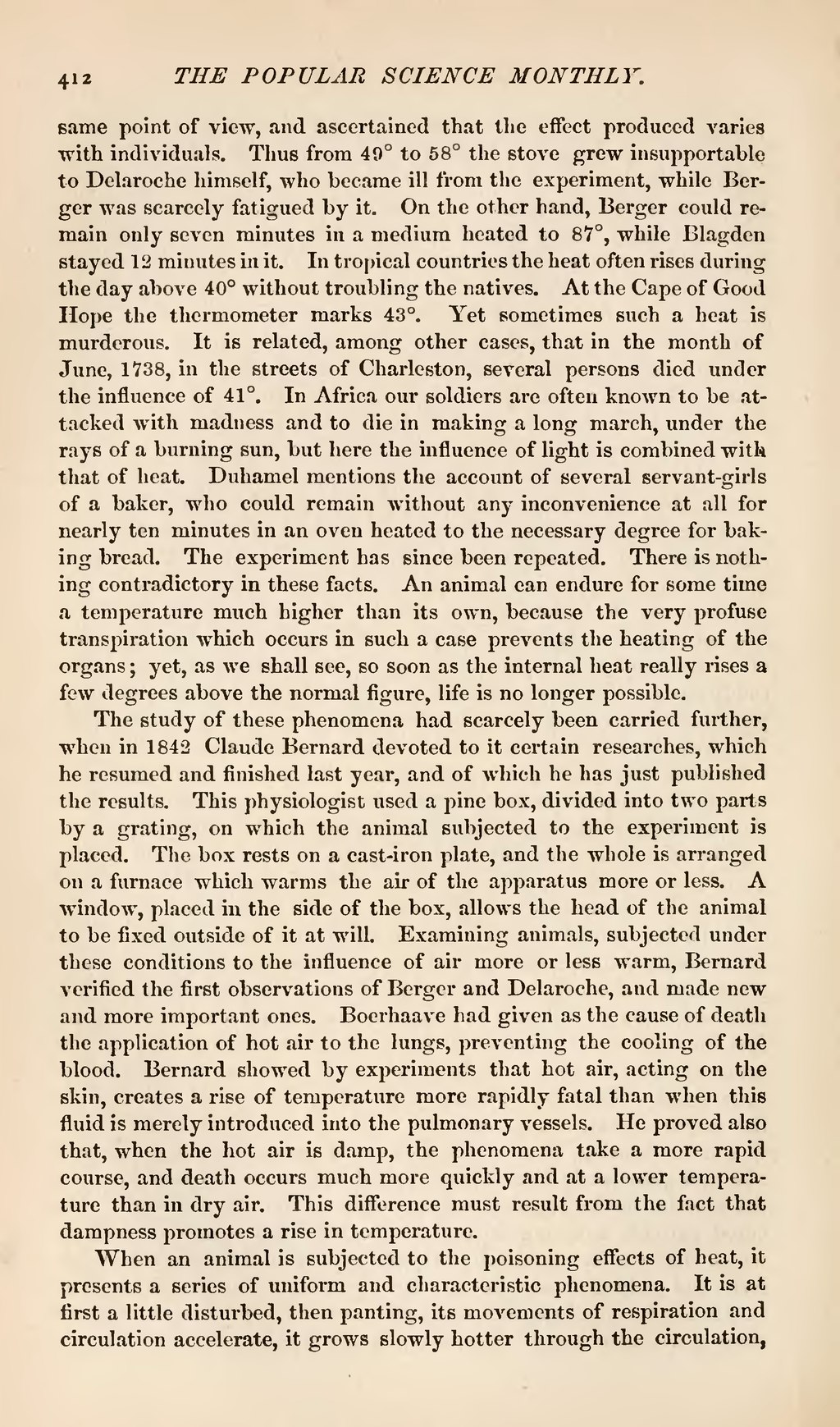same point of view, and ascertained that the effect produced varies with individuals. Thus from 49° to 58° the stove grew insupportable to Delaroche himself, who became ill from the experiment, while Berger was scarcely fatigued by it. On the other hand, Berger could remain only seven minutes in a medium heated to 87°, while Blagden stayed 12 minutes in it. In tropical countries the heat often rises during the day above 40° without troubling the natives. At the Cape of Good Hope the thermometer marks 43°. Yet sometimes such a heat is murderous. It is related, among other cases, that in the month of June, 1738, in the streets of Charleston, several persons died under the influence of 41°. In Africa our soldiers are often known to be attacked with madness and to die in making a long march, under the rays of a burning sun, but here the influence of light is combined with that of heat. Duhamel mentions the account of several servant-girls of a baker, who could remain without any inconvenience at all for nearly ten minutes in an oven heated to the necessary degree for baking bread. The experiment has since been repeated. There is nothing contradictory in these facts. An animal can endure for some time a temperature much higher than its own, because the very profuse transpiration which occurs in such a case prevents the heating of the organs; yet, as we shall see, so soon as the internal heat really rises a few degrees above the normal figure, life is no longer possible.
The study of these phenomena had scarcely been carried further, when in 1842 Claude Bernard devoted to it certain researches, which he resumed and finished last year, and of which he has just published the results. This physiologist used a pine box, divided into two parts by a grating, on which the animal subjected to the experiment is placed. The box rests on a cast-iron plate, and the whole is arranged on a furnace which warms the air of the apparatus more or less. A window, placed in the side of the box, allows the head of the animal to be fixed outside of it at will. Examining animals, subjected under these conditions to the influence of air more or less warm, Bernard verified the first observations of Berger and Delaroche, and made new and more important ones. Boerhaave had given as the cause of death the application of hot air to the lungs, preventing the cooling of the blood. Bernard showed by experiments that hot air, acting on the skin, creates a rise of temperature more rapidly fatal than when this fluid is merely introduced into the pulmonary vessels. He proved also that, when the hot air is damp, the phenomena take a more rapid course, and death occurs much more quickly and at a lower temperature than in dry air. This difference must result from the fact that dampness promotes a rise in temperature.
When an animal is subjected to the poisoning effects of heat, it presents a series of uniform and characteristic phenomena. It is at first a little disturbed, then panting, its movements of respiration and circulation accelerate, it grows slowly hotter through the circulation,
